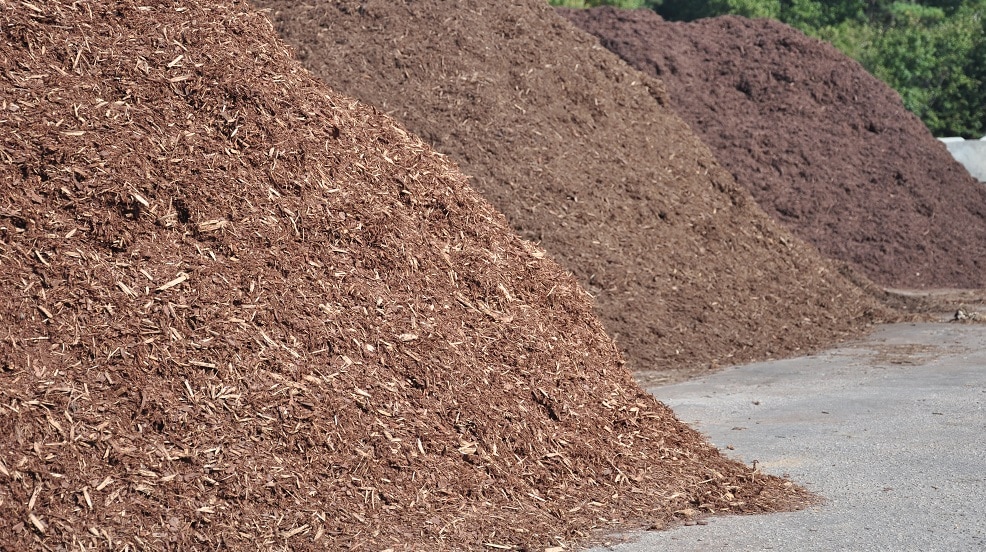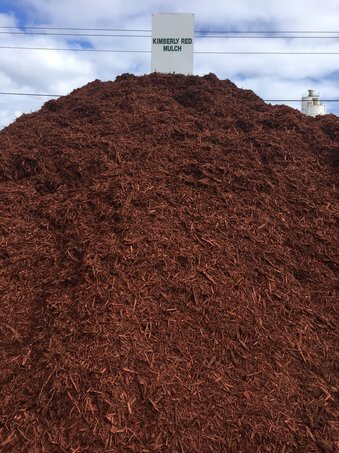Mulching Trees Planted in Perth’s Sandy Soil

Maintaining the health of trees planted in the sandy soil so prominent in the Perth area can be greatly aided with mulch.
But, before you rush out and buy bags of mulch, you’ll want to know why, when and how to mulch your trees, and what type of mulch is best for your trees and your soil.
WHY MULCH?
The goal of tree mulching is to create a soil environment that holds onto the nutrients and the essential water levels needed for strong roots. The following list contains the top advantages for mulching around your trees.
- Improvement and stabilisation of the temperature of the soil within the root zone for healthy growth
- Retention of moisture and prevents the top layer of soil from drying and cracking
- Prevention of weed growth
- Minimisation of water runoff
- Protection from damage caused by lawnmowers and weed wackers
- Deterrent for grass growth around the tree trunks
- Presenting a groomed and tidy appearance to the lawn
WHEN TO MULCH?
Ideally, tree mulching is best done in last spring or early summer. But, with our warmer temperatures in the Perth area, you can tree mulch throughout the year. You’ll want to tree mulch several times a year if you are mulching around new tree plantings or young trees less than 10 years old. An annual tree mulching is beneficial for trees over 10 years old.
TYPE OF MULCH TO USE?
Mulches are classified as either organic or inorganic. The difference between mulches comes down to a personal choice between using a mulch that will decompose and add nutrients to the soil and roots of your tree over time or using a mulch that is permanent and is made from rubber, stones, pebbles, rocks, or recycled glass. Inorganic mulches are best used around the succulents such as cacti that do not require added nutrients from organic supplements to remain healthy.
Celebrated gardener Don Burke, founder of the television program ‘Burke’s Backyard’, recommends organic mulch for shrubs, trees, roses and vegetable gardens. Fine-textured mulch may not be the best option for sandy soil because it’ll pack down when moistened, the water will run off the top level, and it will not penetrate down into the root zone of your trees. Medium to coarse-textured mulch allows for better water distribution to the roots under the soil and for the improved structure of the soil.
Within the organic range of mulches, there are mulch compositions that are well suited for fruit trees, shade trees, and decorative trees and shrubs. You’ll find one of Bibra Lakes Soils pasteurised and weed free mulches to fulfill your tree mulching plans.
If you have any questions about which type of and how much mulch to use for your tree, please call us on (08) 9434 2290 to speak with one of our Bibra Lake Soils friendly mulch professionals. We are open 7 days a week for your convenience.
HOW TO MULCH?
Preparing the area for mulch:
- Define the circular border area around your tree that will be mulched.
- Clear the area of any grass, dead plants, leaves, weeds and old mulch.
- If planting a new tree, place it into its new hole before laying down the mulch.
- If you are installing a watering system, do it before you put down the mulch.
Applying the mulch:
Do not pile the mulch directly against the trunk of the tree because this can strangle the tree’s growth, contribute to excessive moisture buildup and diseases, encourage insect pests, and lead to root rot.
Spread the mulch loosely and evenly. Do not pack down the mulch tightly as this method prevents oxygen and water from flowing down into the soil and the tree roots.
- Fine-textured organic mulch is placed in a circular pattern that is 61 to 91 cm, 2 to 3 feet away from the tree trunk and piled 75 to 100 mm, 3 to 4 inches deep. The width of the mulched area should extend out to the drip line of the tree branches, or should extend to cover a diameter of 122 to 152 cm, 4 to 5 feet from the start of the circle.
- Medium to coarse-textured organic mulch is placed in a circular pattern that is 91 to 122 cm, 3 to 4 feet away from the tree trunk and piled 100 to 150 mm, 4 to 6 inches deep. The width of the mulched area should extend out to the drip line of the tree branches, or should extend to cover a diameter of 152 to 183 cm, 5 to 6 feet from the start of the circle.
- Inorganic mulch can be placed in the same circular pattern as that used for fine textured organic mulch.
- Replenish the thickness of the mulch annually or periodically as the mulch settles down or blows away.
- Maintain the bare inner circle by using a rake to pull back any mulch that has blown up against the tree trunk.
COLOURED MULCH

Mulches come in a mixture of colours that range from light to dark. Using coloured mulch can add an artistic refinement to your lawn. However, the hot summer climate in the Perth area does not favour the use of dark-coloured mulch.
Dark mulch attracts the sunlight and adds to moisture evaporation and soil dryness. Dark-coloured mulch can be used around trees that planted in an area with a canopy or other form of a cover.
The paler coloured mulches help to deflect the harsh sunlight and keep essential moisture during the hot summer daylight hours.


